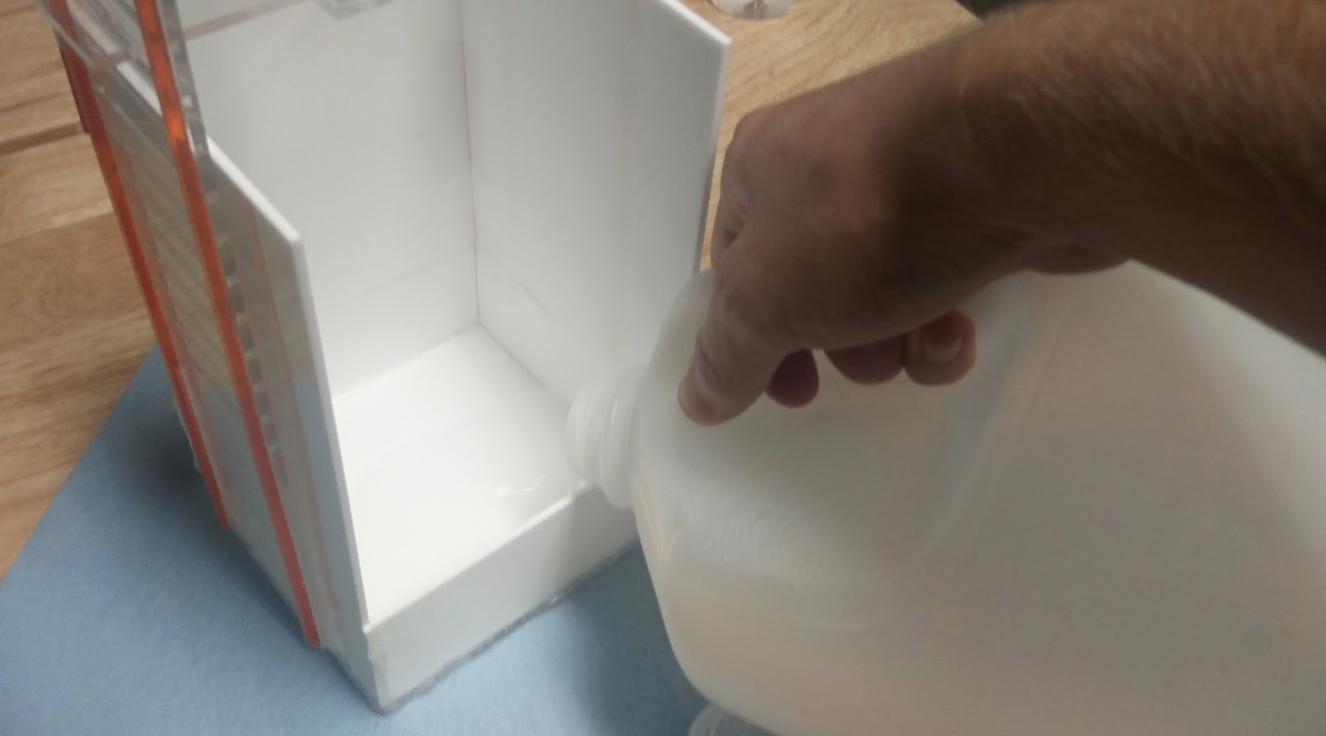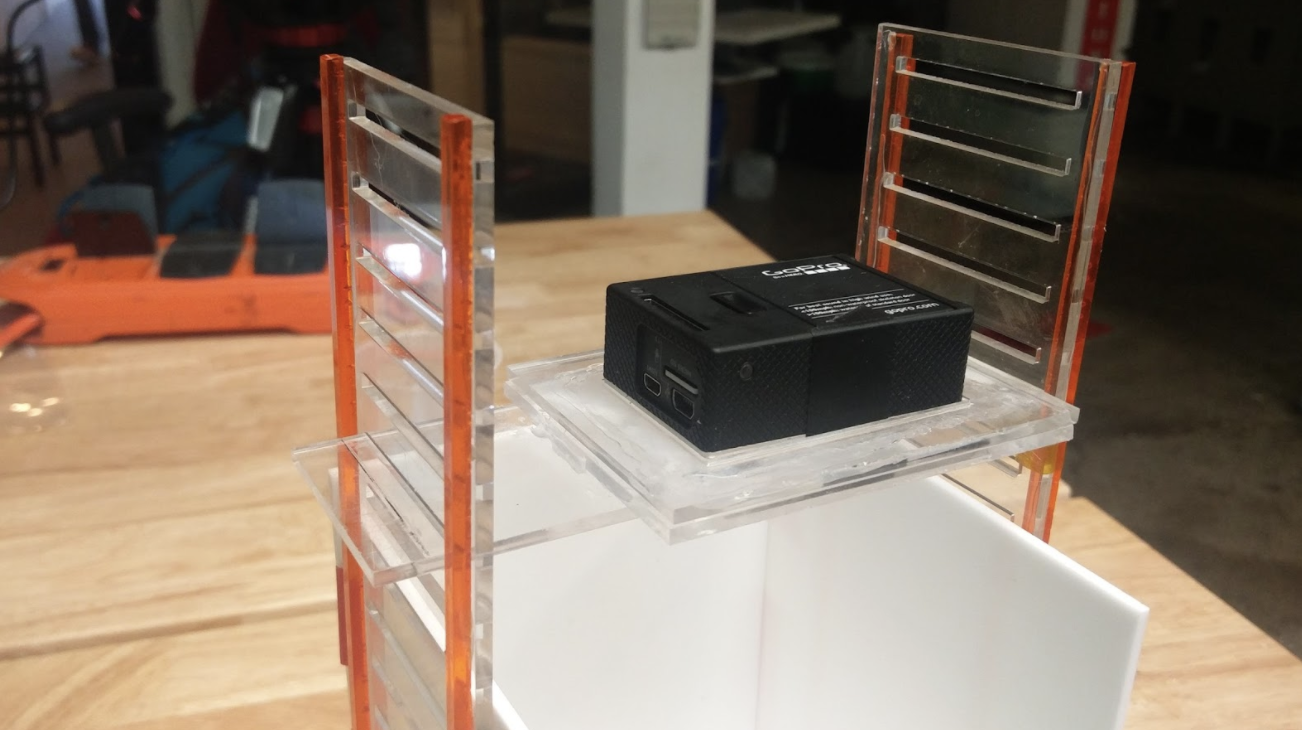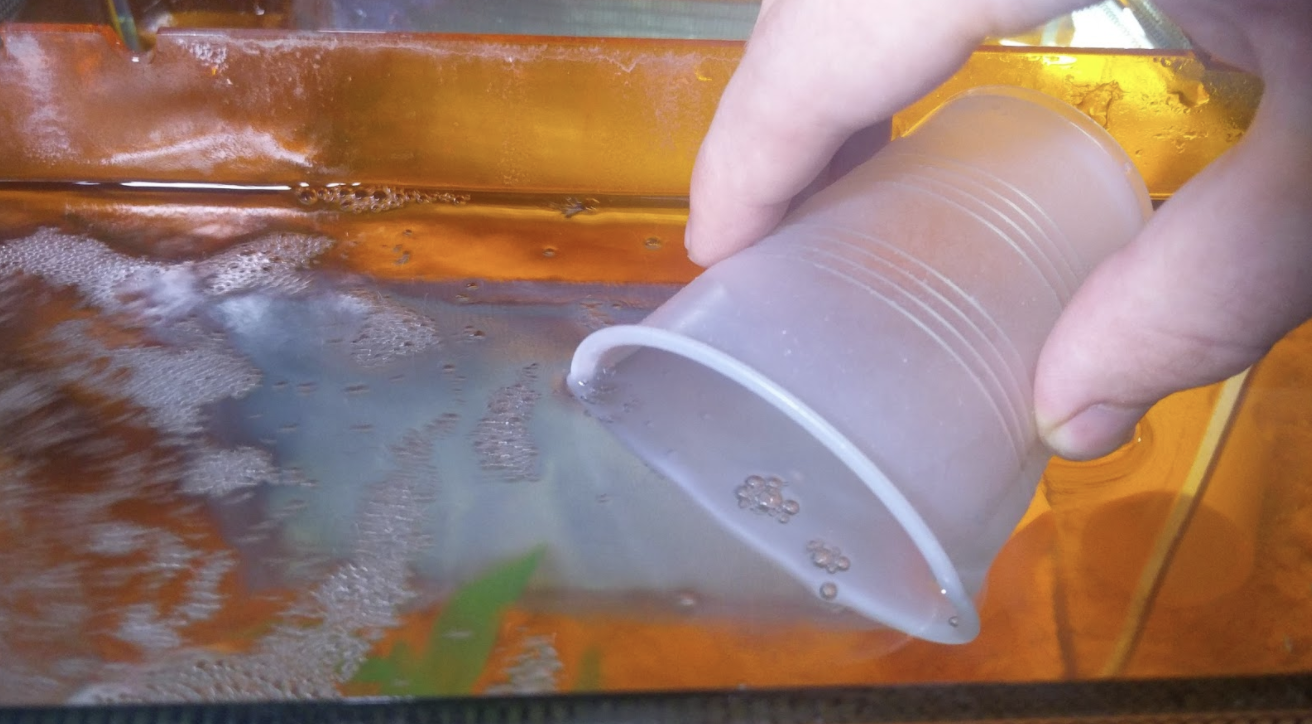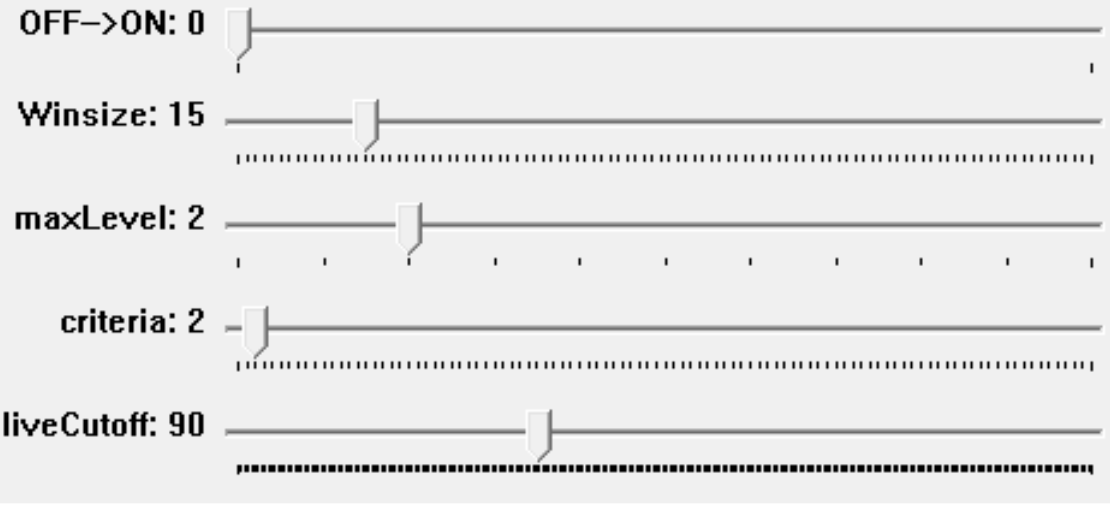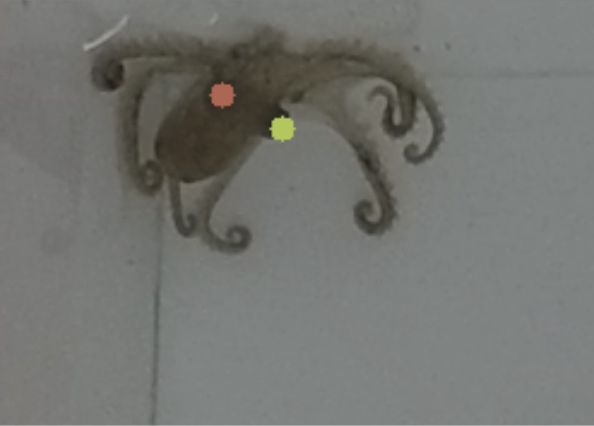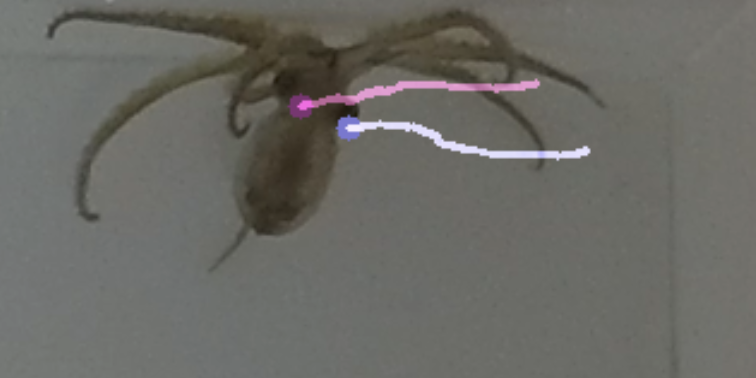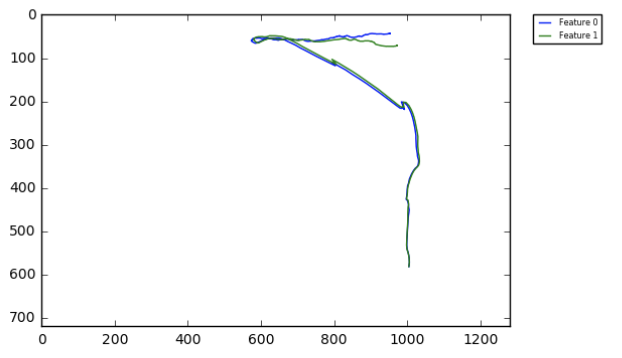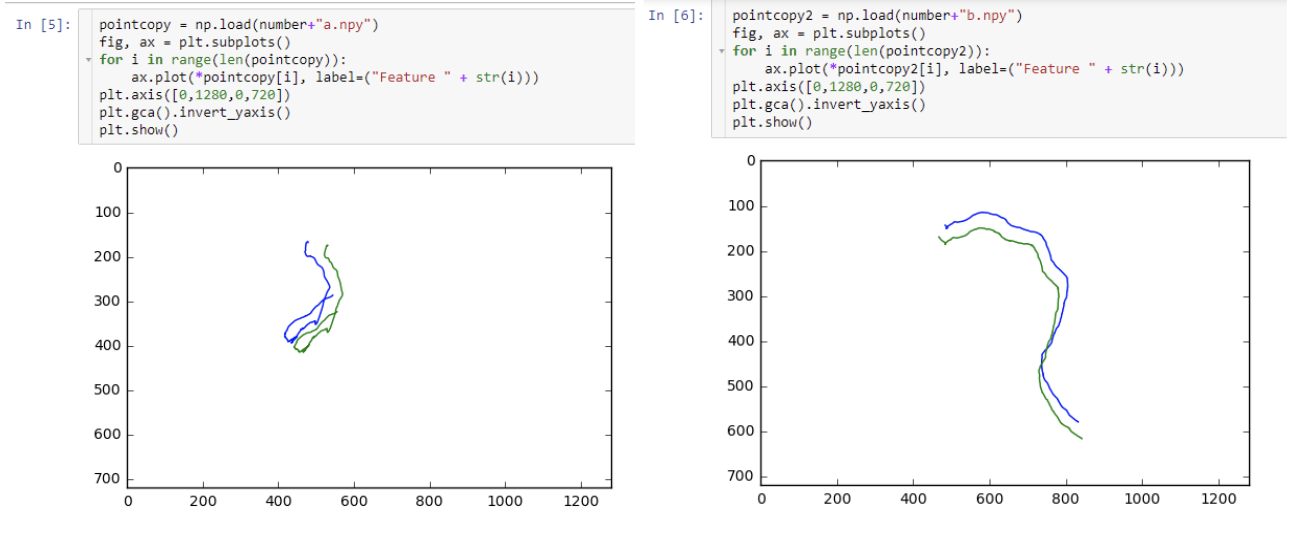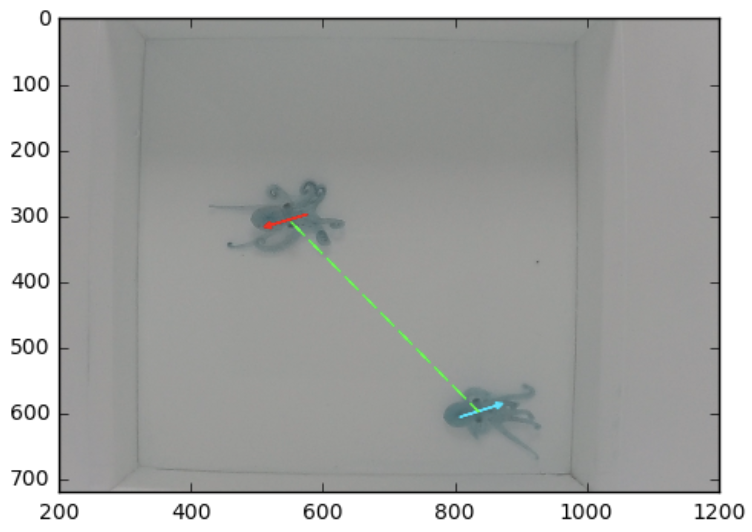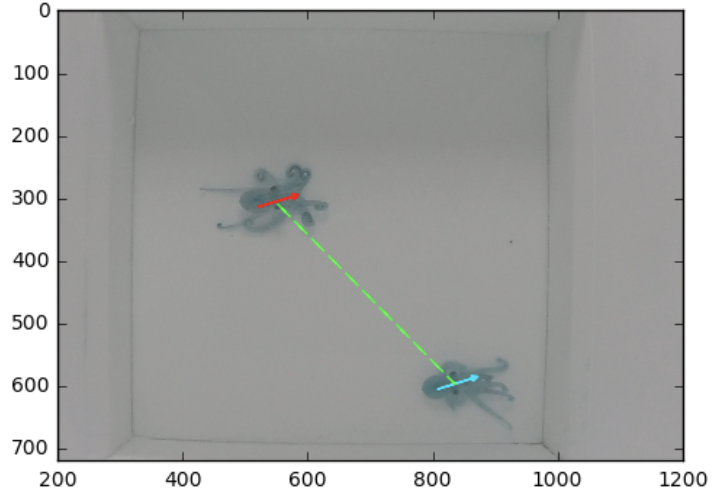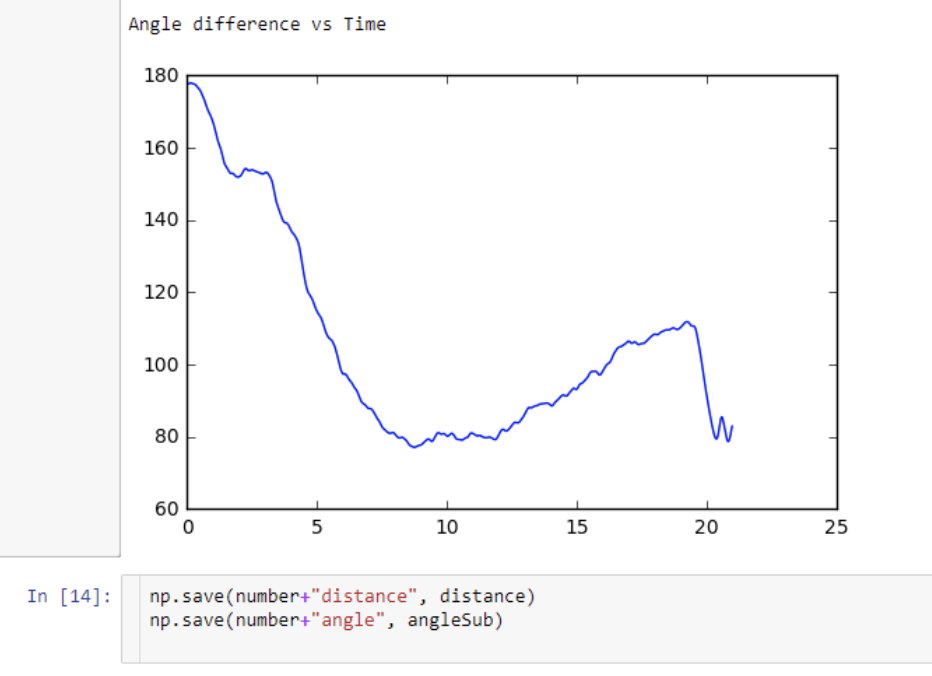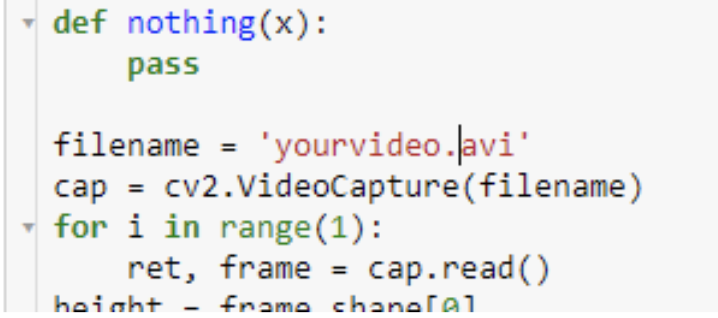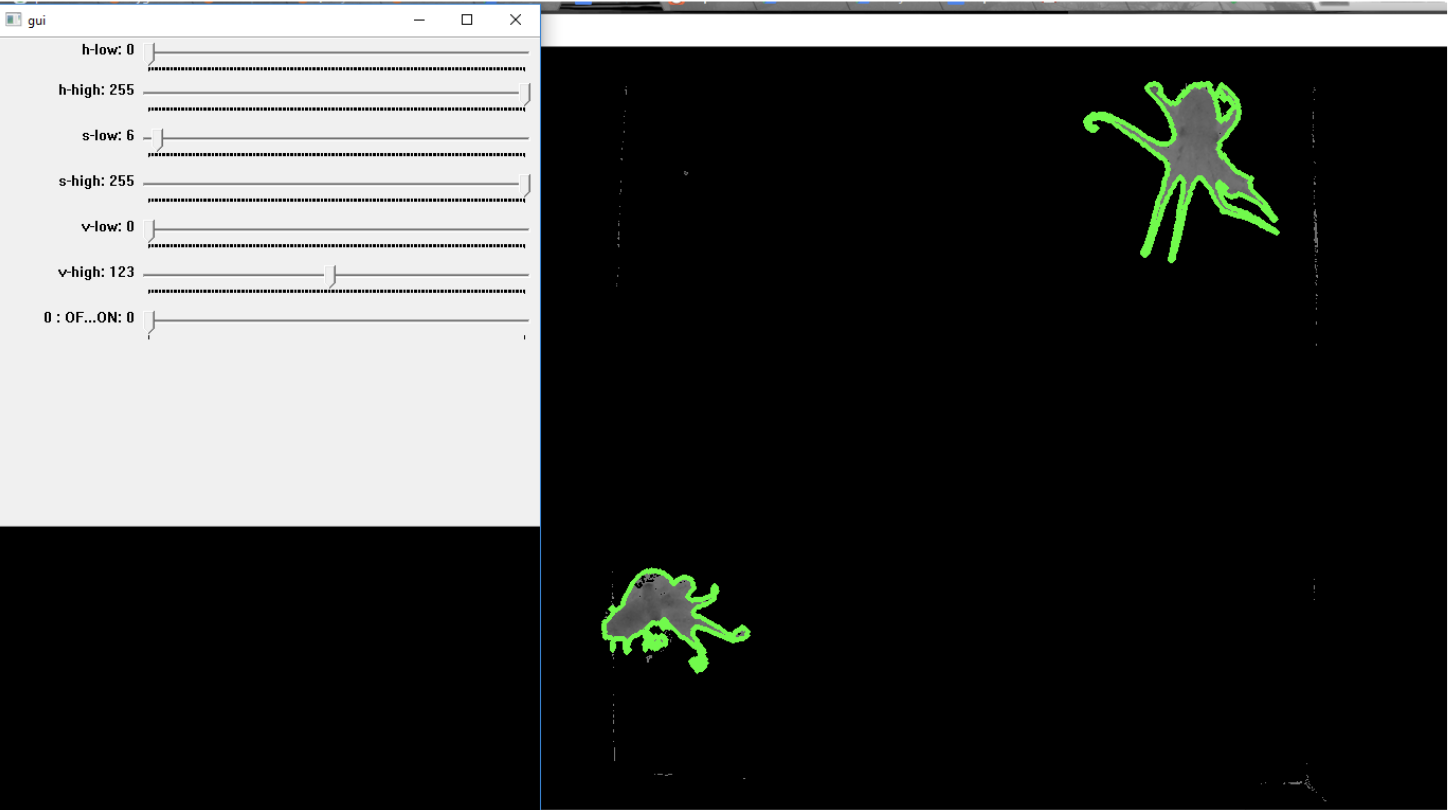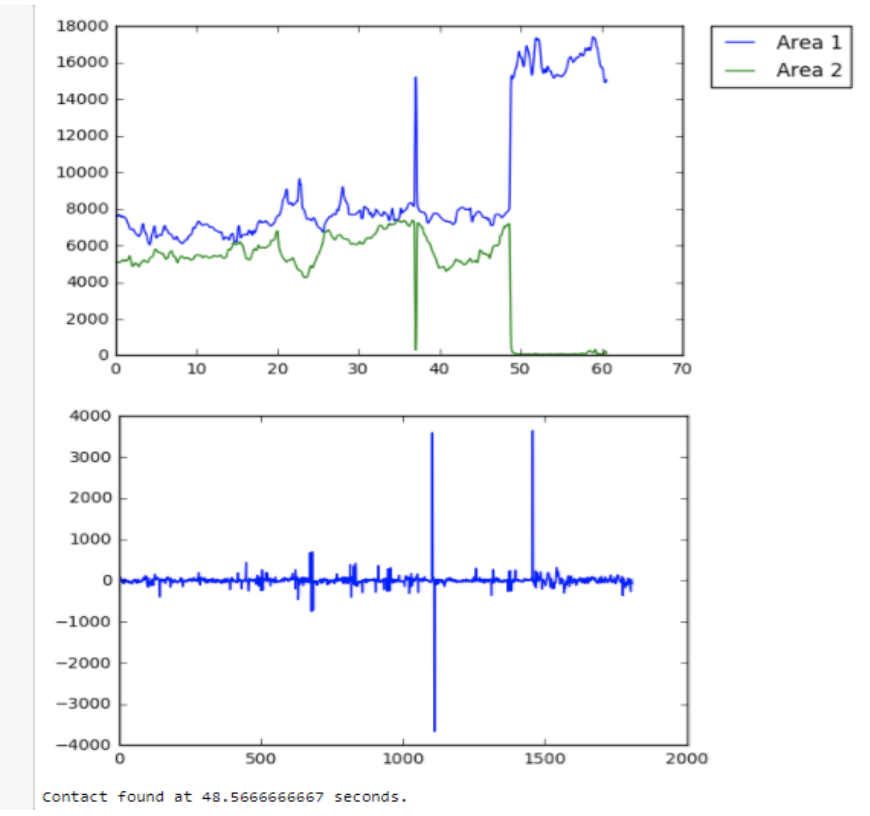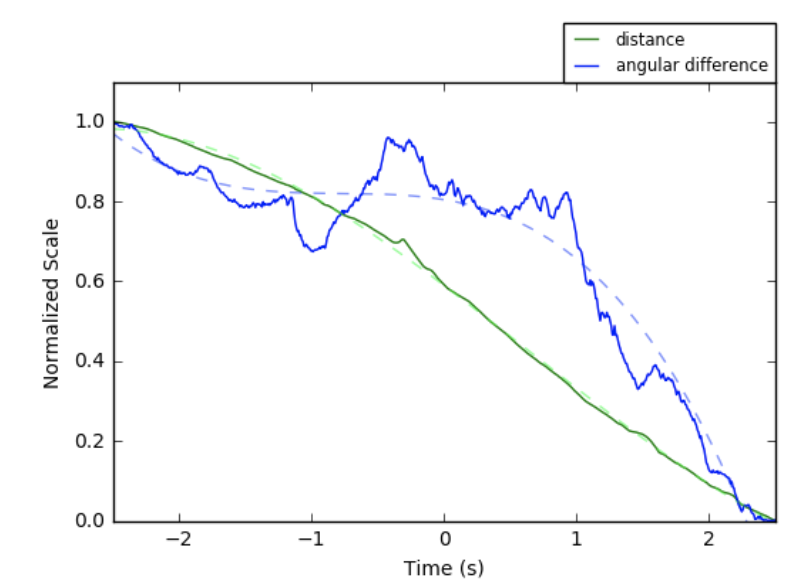Experiment: Octopus Fighting
The octopus is a rather strange-looking animal that exhibits amazingly complex behaviors. And that's no wonder... they have the most impressive nervous system in the entire invertebrate world! Two-thirds of the neurons are actually in the legs. The 8 smart legs and a large brain give rise to excellent vision, delicate object manipulation, and the ability to learn rapidly. Mix this in with camouflaging cells, jet propulsion, and a razor-sharp beak, and you have all the makings of a formidable predator. And then, throw in the fact that the octopus is a solitary creature and suddenly we have ourselves a real cephalopod fight. This experiment was prepared by Ilya Chugunov, a freshman from UC Berkeley, during our Summer Fellowship Program.
Time: 50 Minutes
Difficulty: Advanced
What will you learn?
You will learn how to use Python and the OpenCV library to extract useful features and data (e.g., angle and speed of approach) from simple video recordings of octopuses. This is an introduction to how advanced computational techniques can be used to analyze a wide range of problems.
Prerequisite Labs
None
Equipment
- GoPro Camera
- Small Container
- Computer
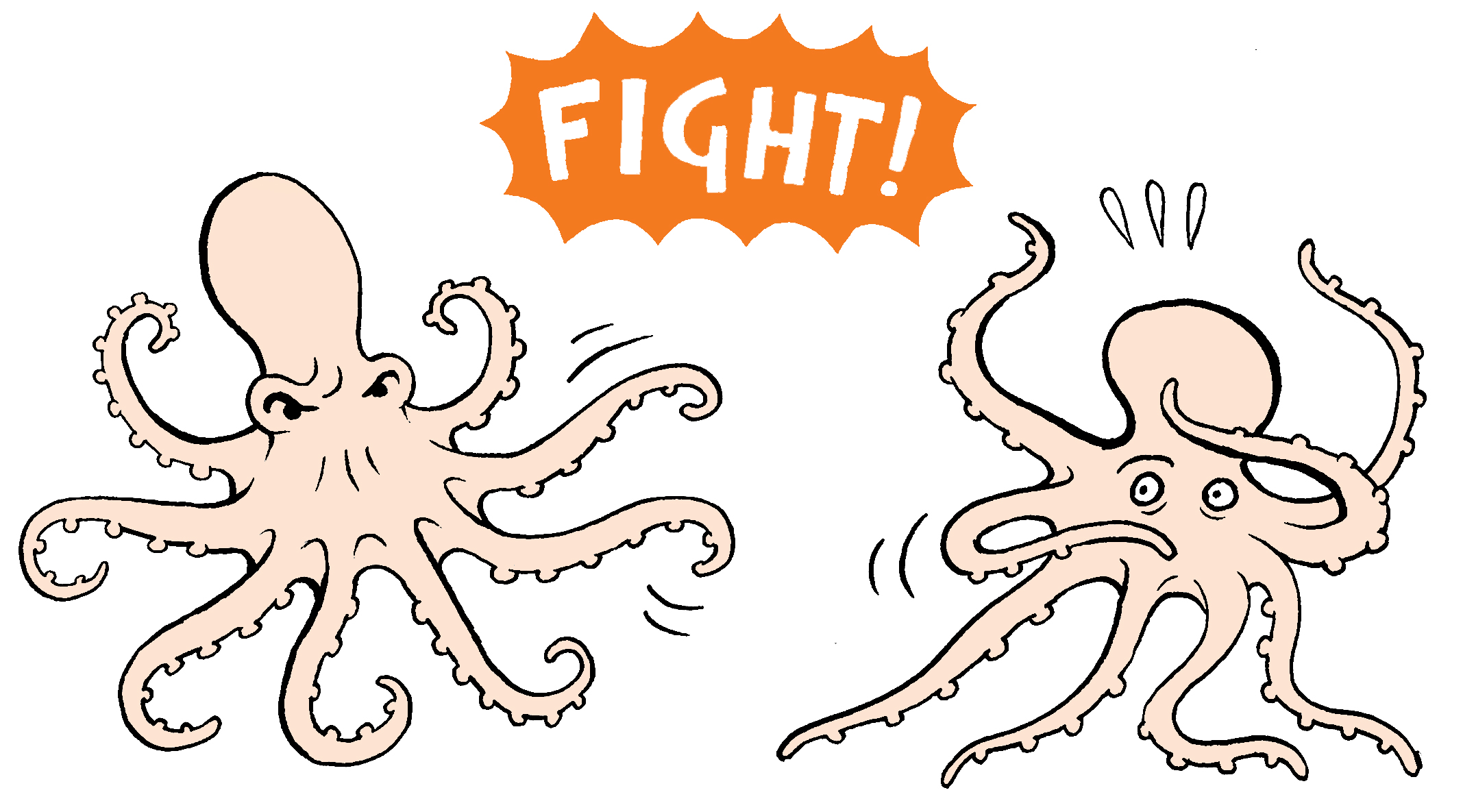
Background
Octopuses (or Octopodes) are some of the sea's most fascinating creatures. Just like cuttlefish and squid, they are cephalopods — “cephalo” means head, and “pod” means foot — basically “head on feet.” They have no large “body” in-between, making them appear to be all head and legs.
Though largely antisocial, they sometimes engage in close-quarters interaction with fellow octopuses. They dance around each other, flash colors, poke at each other with outstretched arms, and—if given the chance—engage in a friendly match of octopus wrestling!
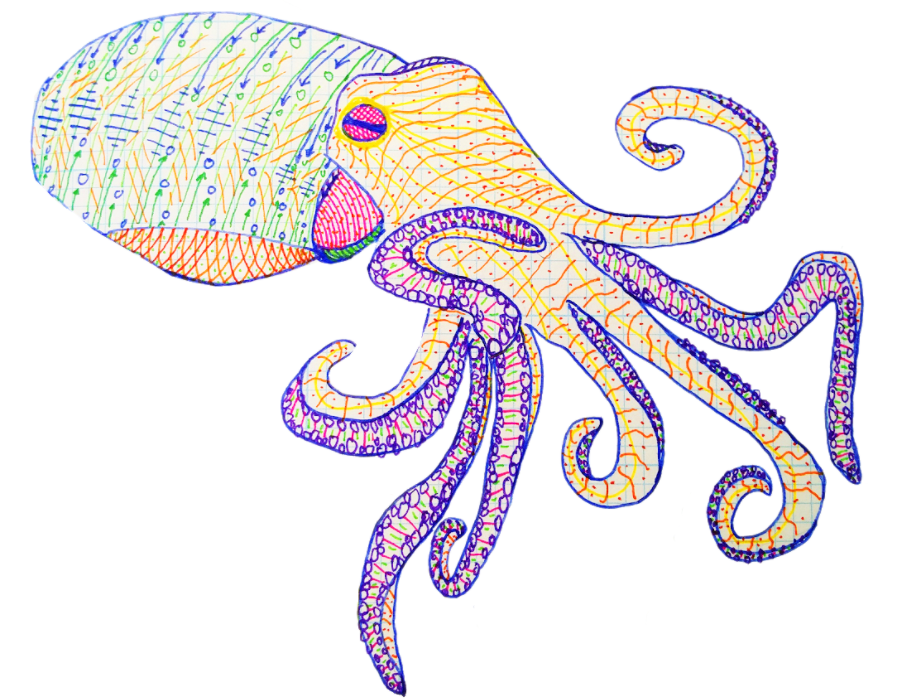
One commonly studied species is the California two-spot (Octopus bimaculoides), named for the two blue spots on its head. (Read more info here.) They are hardy and can live comfortably in a range of 60-80°F. They are diurnal, which makes them more convenient for daytime experiments.
DIY Neuroscience Episode of Experiment
Materials
You will need:
- Octopus chamber (laser cut and assembled). Source File: Octopus Chamber.ai
- GoPro camera
- Mini-USB cable
- Laptop
- Aquarium with sea water
- Two California two-spot octopuses
- Empty, cleaned-out milk jug for sea water
- Lamp with a diffusive filter/cover
- Paper towels (lots)
- Small plastic cup to carry the octopus
Hardware Setup
Assemble the laser-cut octopus chamber using non-toxic glues (hot glue/silicone). Ensure the bottom is watertight. Place paper towels beneath it.
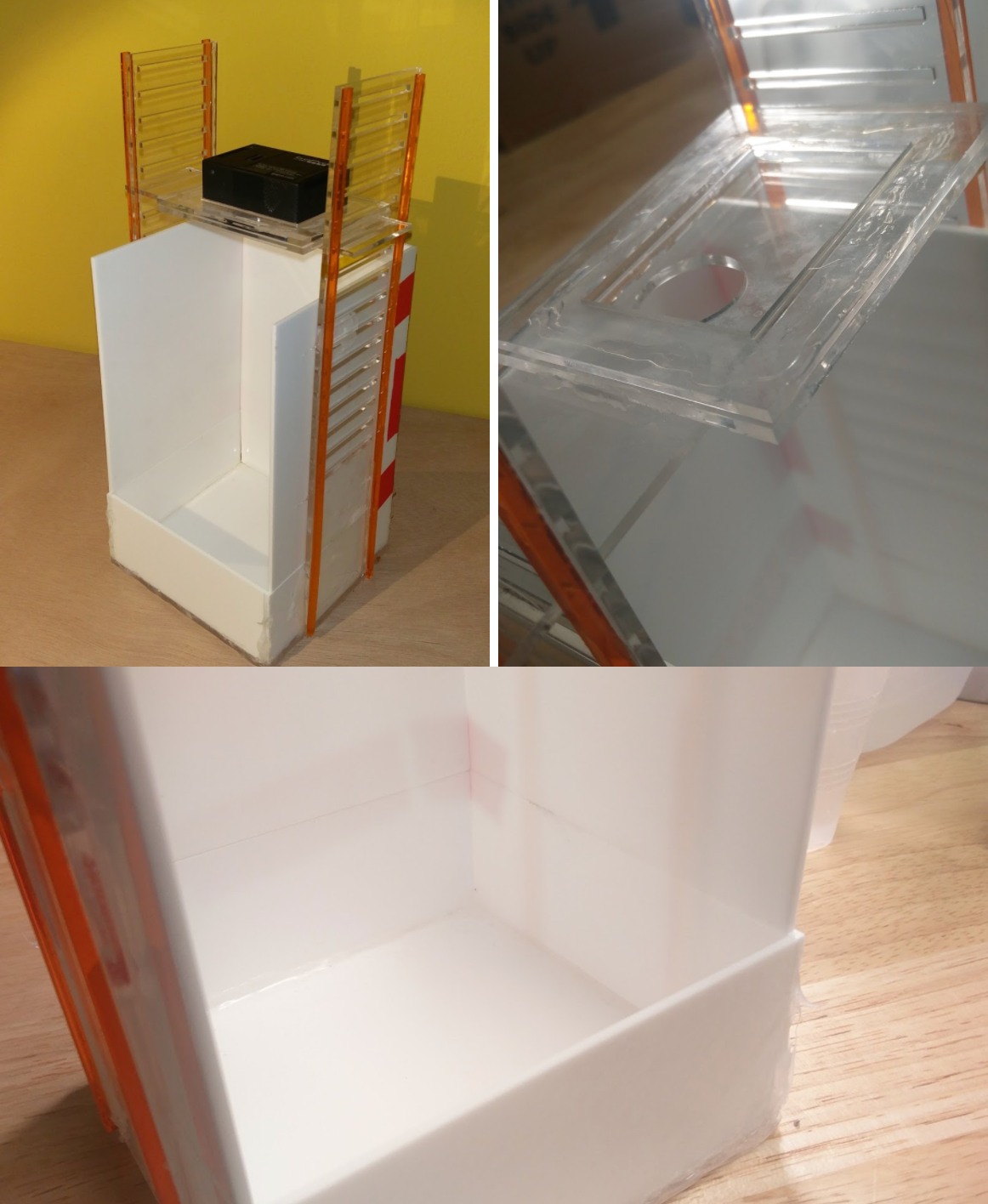
Alternatively, use your own container, ensuring a stable overhead camera view.
Software Setup
All referenced software is on our GitHub.
You will need:
- Octopus chamber (Laser cut and assembled) - Source File_ Octopus Chamber.ai
- Go Pro camera
- Mini-USB cable
- Laptop
- Aquarium with sea water
- Two California two-spot octopuses
- Empty, cleaned out milk jug for sea water
- Lamp with a diffusive filter/cover
- Paper towels (lots)
- Small plastic cup to carry octopus
Hardware Setup
You can assemble our laser cut octopus chamber using preferably non-toxic glues. Use hot glue and silicon to seal. Make sure the bottom is as watertight as possible, but still keep some paper towels under it.
You can also use your own container, but just be sure the camera is steady above the small "arena".
Software Setup
You can find the software referenced on our Github.
You are going to need quite a lot of software to be able to run the provided Jupyter notebook; and you will very likely run into bugs. Don't panic... this kind of problem-solving is an essential experience for anyone looking to delve into computer science.
If you are on a Windows machine, we highly recommend Git Bash as a pseudo-bash console: Git
You will need, first and foremost, PIP, the Jupyter notebook itself, and OpenCV:
Jupyter (We recommendbAnaconda)
OpenCV: If all goes well all you need to do is "pip install opencv-contrib-python" Remember to install opencv-contrib specifically as it contains packages that we need.
Octopus Filming
- Fill jug about a quarter of the way with sea water and shake it to aerate.
- Fill the octopus chamber until there's at least an inch of water.
- Set up Go Pro on top of the chamber.
- Set up lamp so that the chamber is lit as evenly as possibly, meaning the walls don't cast major shadows, but also such that the lamp is not facing directly downwards causing reflection in the water. (Take Go Pro footage and check multiple times to see that the lighting looks good)
- Scoop up one octopus with the plastic cup, be careful not to hurt their arms.
- Gently let the octopus leave the cup into the chamber.
- Scoop up second octopus.
- Press record.
- Place second octopus into chamber and record for 15-25 minutes.
- Stop recording, and place octopuses back into their respective tanks.
- Repeat this filming up to 3 times per day, giving the octopuses at least 2 hours of break in between.
- Move the video recordings from the Go Pro onto a computer, and use any preferred video-editing software to cut it into 15-20 second clips surrounding the observed interactions (i.e. starting 10 seconds before a fight and ending 5 seconds after). Place the behaviour videoclips in the same folder as the Octopus_Optical_Flow.ipynb. Important_ Video clips must be 720x1280, anything else requires significant code changes and you're on your own. 60fps is recommended.
- Press Shift and Tab at the same time to run a cell of the Optical Flow notebook. Start by running the cell with all the import statements.
- Change the filepath to match that of the videoclip you want to analyse
- Leave one of the two options uncommented_ top is full-colour, bottom is black and white with the mask applied, exactly what the computer sees_
- Run the optical flow codeblock. A GUI will pop up if the video is loaded correctly. Since the corners will be selected manually the only important settings are in the top half of the GUI_
The top switch is to start the corner selection, flip this when finished with the four settings below it.
- Winsize_ Size of the search window at each pyramid level
- maxLevel_ Height of image pyramid created
- criteria_ Parameter, specifying the termination criteria of the iterative search algorithm
- liveCutoff_ Maximum brightness (0-255) that the algorithm will look at (anything above is ignored)
Best way to really figure out what these do is via trial and error.
- After the switch is flipped, select two points for tracking on one octopus (the eyes are recommended) by clicking on them.
Press escape to run the algorithm.
- The code will now run and trace paths of the octopus, if one of the points loses contact with the octopus, terminate the code by pressing escape and try again. Try changing settings or clicking different points on the octopus.
- Upon completion, the codeblock will print out an image like this, this is the traced path_
- Run first pointcopy block_
- Run steps 17-19 for second octopus. Save by running only pointcopy2 block. Don't run the first pointcopy block again, this will overwrite the data.
- Change number to be a name you'll remember (probably the current videoclip name)
- Save the data. This will create two files, a for the first octopus and b for the second.
- Repeat steps 14-23 for as many videoclips as needed.
Experiment: Angle and Distance after Contact
- First in Octopus_Optical_Flow load the a and b point data saved from the videoclips analyzed in the methods. To do this define number as the name of the saved points (the .npy file without the a or b at the end)_
- Run the two np.load codeblocks to load and display the a and b paths.
- Run the next codeblock to make sure both arrows go from the octopus' mantle to its head. If it is incorrect such as this_
Use the codeblocks below to flip the points_
Until both arrow look like this_
- Run the last 2 codeblocks to calculate and save the distance and angle data_
- For all the videoclips analyzed for distance/angle data it is now necessary to find contour gradient data so that all the points of contact can be aligned. Open up Octopus_Contact and change the filename for the desired videoclip_
- Run the codeblock and adjust the sliders (mostly v-high) until the green lines draw a nice contour of the octopus_
- Flip the Off-On switch and let the video run.
- Upon completion of videoclip, run the codeblock below it_
- Save the data and repeat the procedure for the rest of the videoclips_
- Now it's time to write some code. Create a new Jupyter notebook and write a sequence of codeblocks that will_
- Load all the distance, angle, and gradient files.
- Cut out a 200 frame width window from the distance and angle vectors that is +100 frames and -100 frames of the frame where the respective gradient vector has its peak.
- Normalize and add together all these windows.
- Plot the results.
- Add some extra features like labels, lines of best fit, coloration! The end result shoud look like this_
Science Fair Project Ideas
- Is there a heirarchy formed amungst octopodes?
- What other patterns do you observe in their behaviours?
- Do the octopodes always approach on the same side? Can you write code to determine this?
